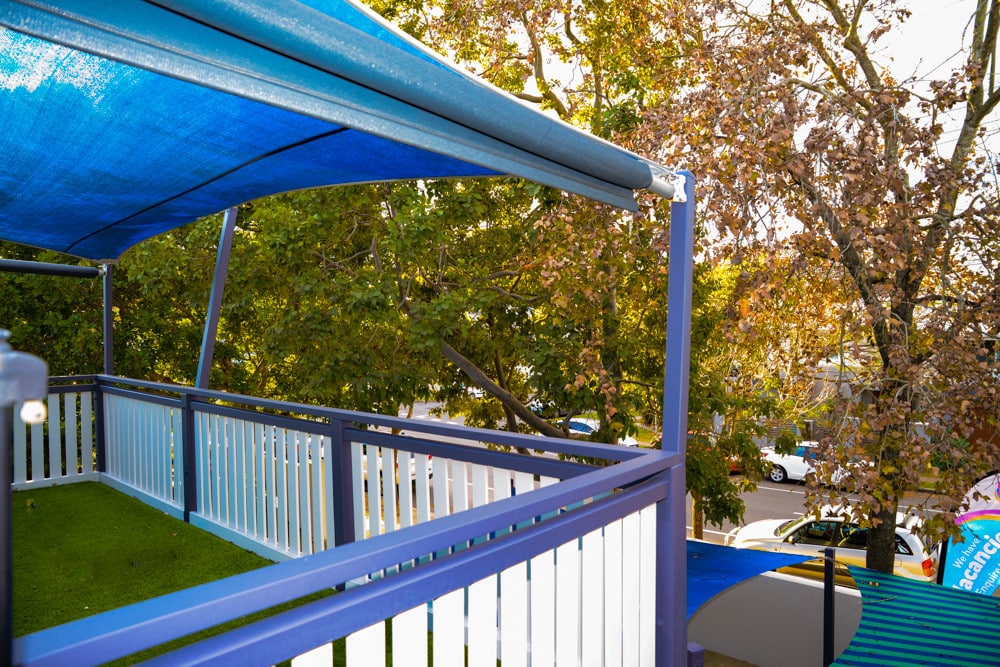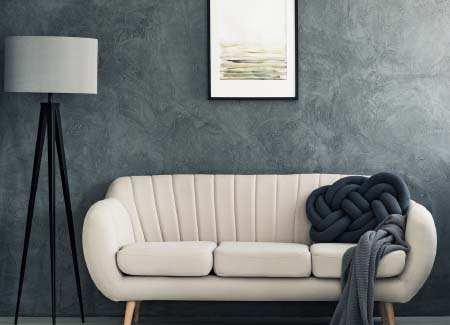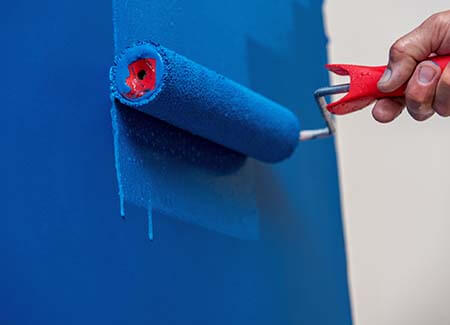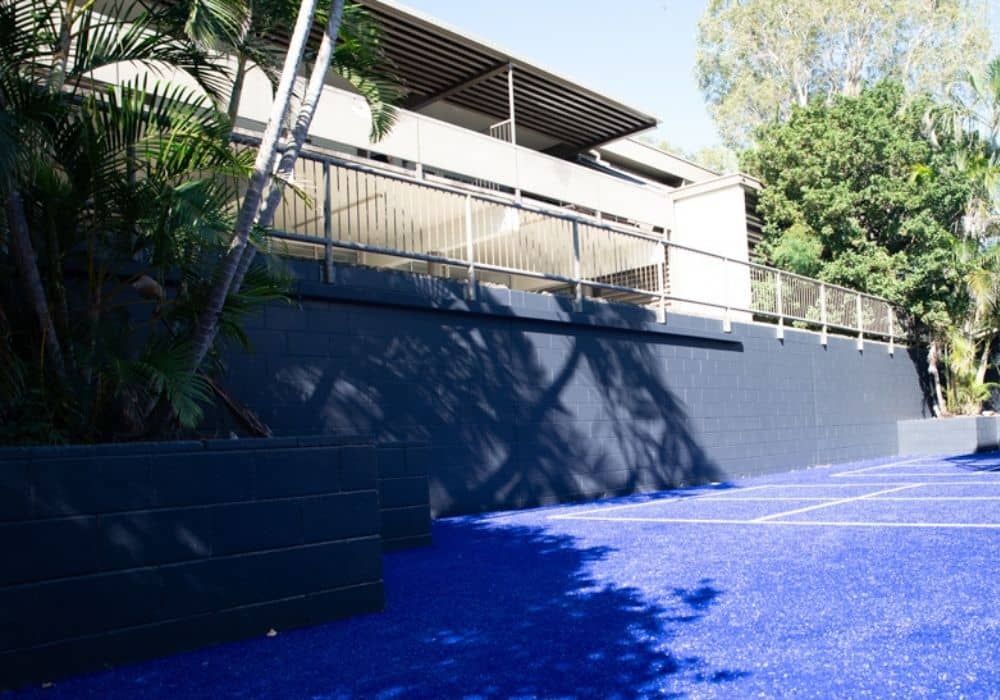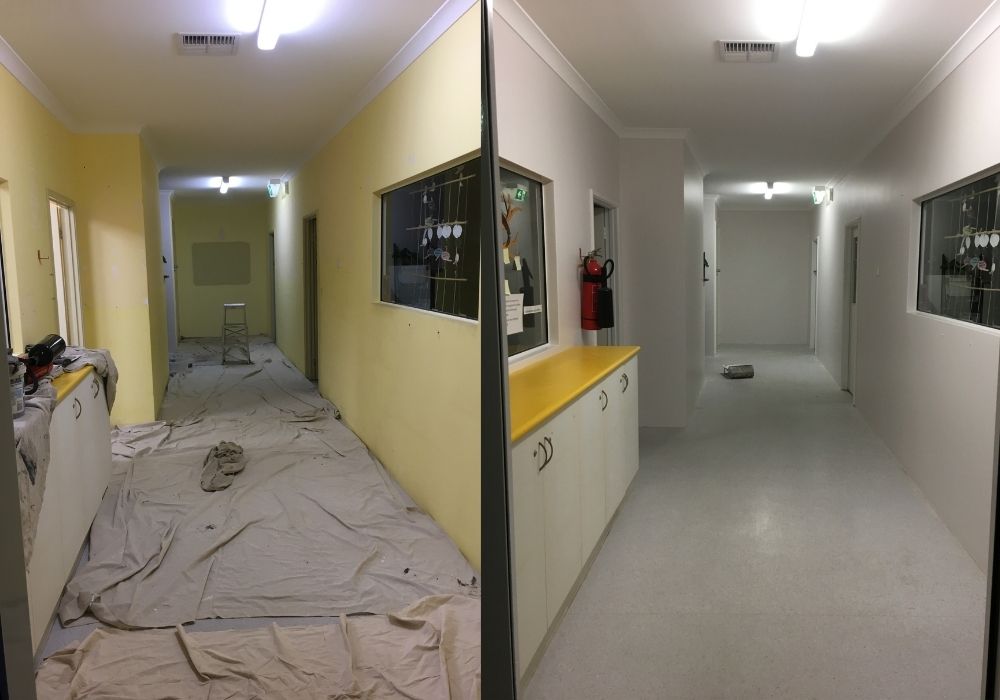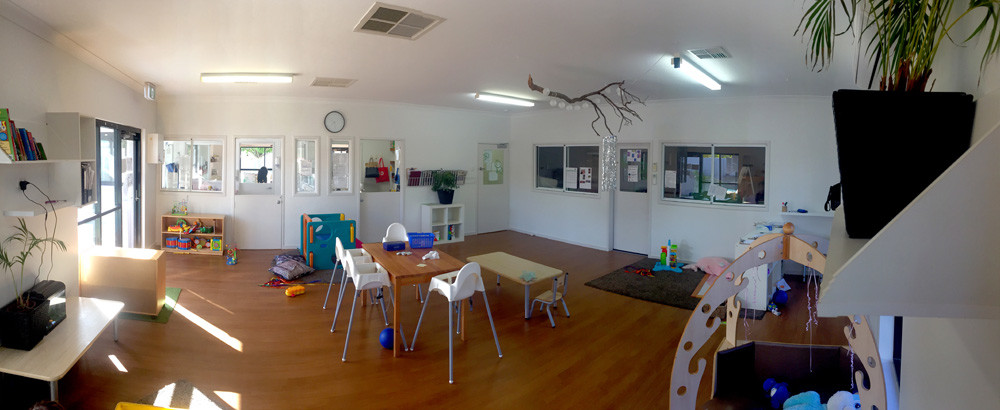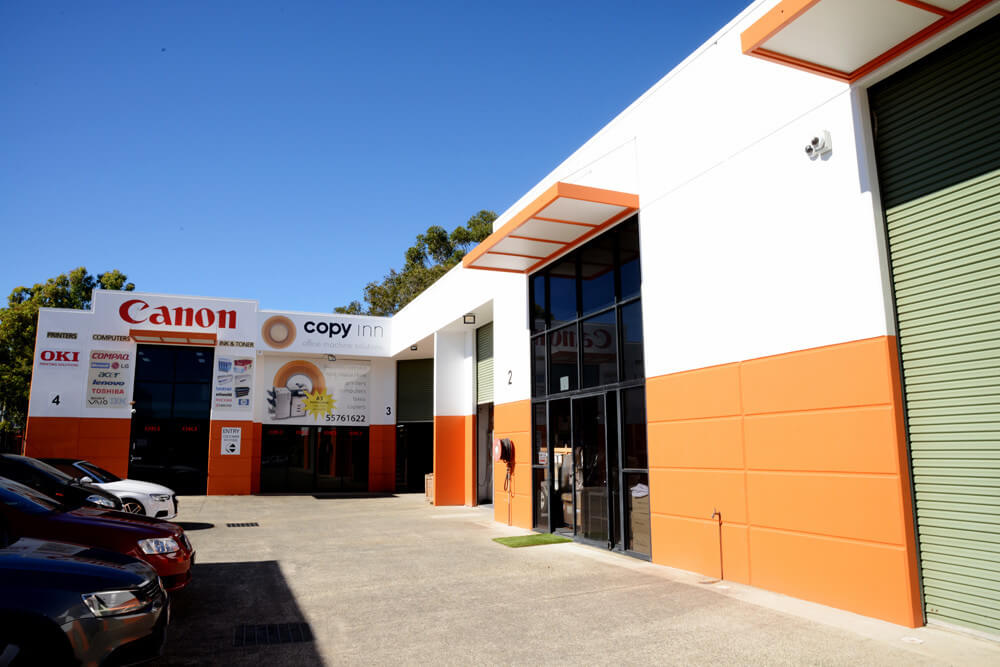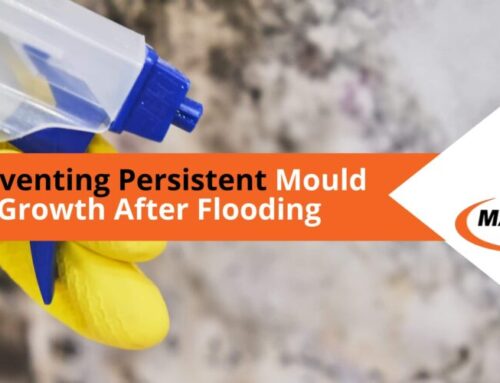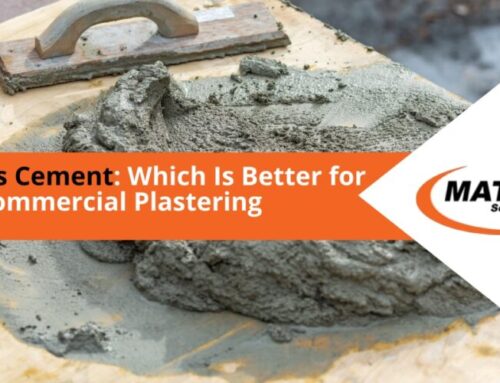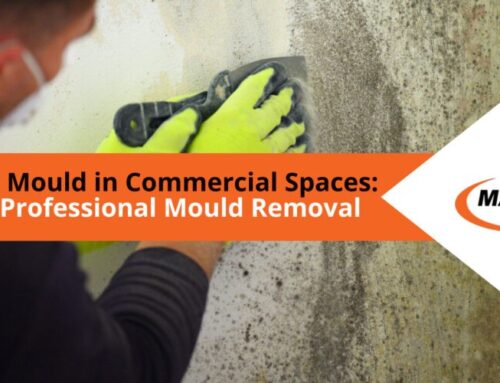Painting your own commercial site can be tricky as one must take into account many factors whilst staying true to the company’s brand. Furthermore, commercial painting is not the same as residential painting, as many might come to think. Therefore, business owners should treat the two differently as a simple paint job can just as easily go south, when done wrongly, resulting in lost money and time invested.
Obviously an easier approach would be to hire a professional which specializes in commercial painting services. However if you are keen to paint your own commercial site, here are some tips on how to choose the best building finish so you can make your painting project as close to a commercial painting expert’s.
Top 4 Tips You Should Follow Before Painting Your Commercial Building
1. Aligning with your company brand
Decide on what the theme or look and feel you are trying to achieve. This is especially important as there have been many cases where businesses have failed to portray their brand correctly due to simply picking the wrong colour which then results in communicating mixed messages about your company’s brand and image.
How can one approach this?
Start by making an ‘inspiration board’ that suits your desired look and aesthetic. This should help guide you with the intended look and feel you are trying to achieve.
If you haven’t got one already, draw back on your company’s brand guidelines for your desired colour theme and finish.
Make sure that your commercial space is presented consistently with your brand’s signature colour and logo. This is especially important as consistent presentation of a brand has seen to increase revenue by 33%. And you’ll surely want all the help you can get as it only takes takes 50 milliseconds for customers to form an opinion about your business.
2. Inspect and measure the area
Inspect – Commercial sites and buildings often house hidden damages such as cracks, holes and mould. Make sure to inspect the intended area prior to painting it as these sneaky little damages can completely alter the way one must approach a paint job and the type of paint used.
Take photos – from each corner/angle of the room so that you can later visualise what that “ideal” before and after” will look like. Also, paint companies today have software and online apps to help you see it… using an existing image or scanning the room with the app.
Measure – If you have a measuring tape – measure it out so you can calculate the area which will help you with the approximate amount of paint you will need for the area. Check out the online paint calculators so you know how and what to measure. And if you dont have a measuring tape, why not look at the apps that virtually scan the area to get your measurements for you. They can be surprisingly accurate.
3. Choosing the right finish for your space
Consider the weight and types of forces your commercial space will have to endure on the daily. For example, if you own a daycare centre, your space is more bound to be the outlet of unwanted drawings and spillages, so scrubbing the walls would be a regular maintenance routine. However, if you own an office building, you’ll find that the walls won’t need as much cleaning as that of a daycare commercial space.
That being said, a high-gloss paint finish is a great high-maintenance commercial painting, perfect for daycare, since it is able to withstand a regular cleaning schedule in comparison to a flat paint finish – the gloss helps seal the paint more durably while allowing for any mess to be cleaned off easily.
Here are some of the most popular paint finishes you can choose from depending on the type of commercial space you have:
- Glossy paint finish over a flat paint – perfect for buildings in high-humidity areas like your kitchen and areas that need to be wiped down often
- Eggshell paint finish – helps brighten up walls and ceilings, especially in early mornings and late afternoons, in spaces with low exposure to natural light. Great for low-traffic areas. This is a low-shine paint finish that is also great for use on exterior buildings.
- Semi-gloss paint finish – protects against extreme heat and grease. Great for kitchens and bathrooms
- Matt or flat paint – is good for low light, low traffic areas
4. Colour psychology
Previously we had said that it is best to stick to one’s original brand’s signature look, however, if you are still keen on adding a few more colours here and there, then it might be best to refer to colour psychology. Numerous studies have been conducted on how colour can affect our moods, but not much, if any, studies how paint finishes can affect the ambience in commercial buildings. But generally, here are some basic principles you can follow:
- Glossy finishes – great for high energy, high touch, and high traffic areas (e.g. a car dealership or showroom where a car’s glossiness is often correlated with attractiveness).
- Flat, matte, or eggshell finishes – works well in subdued or quiet areas (e.g. a high-class restaurant where you don’t want the walls or ceilings to outshine the dining experience and unconsciously reminding them of grease).
You NEED to Know: Difference Between Paints & Coats
Before we talk about the different types of commercial paints and coats, it is important to learn to differentiate the two, as exclusively using one of the two for your painting job can easily backfire. The coating is the layer that would protect the material for a long period, paint is the aesthetic liquid/ paste that you use to make something look good. Though modern paint has layers of protection, not all paints are considered coating.
A wise interior and exterior painter once said “all coating can be paint, but not all paint can be coating” – the difference mainly depends on performance.
If you’re looking for a cost-effective option and only want your commercial building to look good, but are not too worried about protecting against the daily wear and tear, painting can be the most feasible choice. However, if you’re aiming to protect your commercial property for the long term, coating your commercial space after painting will be the better option.
Common Types of Paints Used in Commercial Painting Services
There are a ton of different paints available in commercial painting for both interior and exterior services. However, when choosing the type of paint for your building, it’s important to note the kinds of surfaces that needs to be painted.
Epoxy
Epoxy paint is one of the best picks when painting machinery and floors because it is one of the most durable paint materials in the market today. Epoxy is highly recommended for high-touch surfaces, such as floors and machines, as it acts as a shiny sealant, allowing surfaces to be cleaned easily.
Dry Fall Acrylic Paint
Dry fall acrylic paint, especially those with mildew resistance, is great for ceilings as well as for a variety of surfaces, such as metals, wood, and PVC. This type of paint is highly recommended for commercial buildings with multi-material ceilings, such as ventilation and wirings with different colours.
Elastomeric, Acrylic, and Latex
Latex, elastomeric, and acrylic paint are suitable for painting stucco and bricks because of their resistance to mildew, which helps building maintain their exteriors looking clean and fresh longer.
Latex
Latex paint, in itself, is considered one of the best choices for commercial interior painting projects – it virtually has a wide range of colour and finish choices that will help make it easier to match with your original brand’s look. This type of paint is commonly used to create crisp wall arts and stunning murals.
Vinyl Matte
Vinyl matte can be an excellent choice for hallways, ceilings, and conference rooms as it shows little to no reflection and delivers that smooth, subtle look in commercial buildings. The best part is that this finish covers imperfections effectively. However, they are quite difficult to clean, so they are not recommended in areas like bathrooms and kitchens.
Vinyl Silk
Vinyl silk, also known as gloss paint, is also great for commercial interior painting projects. This type of paint varies from application to application. Some commercial buildings have eggshell paint, which refers to a kind of sheen that is usually off white, while others have satin, which is a smooth velvety look that is glossier than eggshell and flat finishes.
Emulsion Paint
Emulsion paint is highly recommended for touch-ups or painting feature walls. This type of paint is commonly water-based, and it’s typically characterised by its fast-drying and hardening capabilities. When mixed with vinyl or acrylic, it becomes more durable and easier to apply, especially on ceilings and walls.
Cement Paint
Cement paint is commonly used in commercial exterior painting for its waterproof characteristics and durability. This type of paint is usually found in powder form, and commercial painting experts mix it with water to achieve the desired consistency.
Common Types of Coats Used in Commercial Painting Services
Coating is like adding an extra layer of protection to the surfaces painted on. This method is optional but is recommended for business owners seeking to give that extra protection against deterioration that will otherwise accelerate due to environmental forces.
Lacquer
Lacquers, created using the sap of lacquer trees, are clear coatings that are used to protect wood and metal surfaces. This type of coating is often used in commercial painting..
Primers
Primers are a type of coating that is used before a second or final coat to ensure that the topcoat will become more adhesive. Primers are also known to help prevent unevenness and discolouring on the top coat as well as fend off corrosion.
Paint
Remember that all coating can be paint, but not all paint can be coating. Some of the most popular paints that are used for coating in commercial painting services are enamel paints and lacquer paints.
Sealers
Sealers are often applied on floors, concrete, metal, wood, and tile. This type of coat is used to prevent the surface from contamination and damage. It is often soaked in a porous surface, which prevents corrosive elements from seeping into the surfaces.
Stains
Stains are commonly characterised for being semi-transparent and are often applied on wood surfaces for additional colour and protection. This type of coat is semisolid, thereby forming a protective film on wood surfaces, while letting natural wood grain become visible.
Additional Helpful Tips Before and When You Start Painting
-
Drywall vs Plastering
In the case where you are considering to build, rebuild or renovate your commercial space, you should consider these two materials when making walls and ceilings. Commercial plastering will alter and is relevant to the way you should approach your painting job.
Drywall is made out of softer material, gypsum, and is a more popular pick for its affordability and efficiency. However, it is recommended by commercial plasterers to use cement plasters rather than drywall/ gypsum plasters, both for commercial exterior painting and commercial interior painting, as it is more sound dampening, moisture-resistant, durable, sturdy and fire-retardant.
However, commercial plastering comes with a twist, it is more time consuming and complicated than the former. But worry not, Mathiou Services also serves as a plastering company, offering supreme plastering service with our experienced commercial plasterers for your commercial plastering needs.
-
Cracking & Flaking of Paint
Cracking and flaking of paint happens quite often but they are comparably easy to avoid with the correct preparation. You can prevent or repair cracks and paint flakes by ensuring that you are working on a clean, properly sanded, cleaned and primed surface.
It is also important to use a high quality paint, however, quality paint can’t cover for a bad painting service. Experienced interior and exterior painters suggest spreading just the ‘right’ amount of paint, not too thin nor too thick. Nevertheless, paint will become brittle with age.
Additionally, as previously discussed, the type of plaster your commercial space has will be significant to the durability of your paint. It is recommended by interior and exterior painters to avoid using gypsum plasters as its soft surface tends to develop cracks easily when installing wiring and wall decorations.
However, if the damage has been done, there are ways to repair cracks and flaking of paint. If the walls and ceilings are plastered with cement plaster, then you must redo your plaster & repair holes by breaking away loose plaster, cleaning the area, fill the hole with a base coat of plaster, allow it to set (but not dry), apply another coat of plaster, let it set again (but not dry), and apply a final coat. Once completely dried, sand the area until completely smooth.
Importantly, avoid using crack filling paint without professional help as self painting cracks often ends up leaving the area looking worse than before. Self painting cracks with crack filling paint without professional interior and exterior painters should be avoided as it often leads to unevenness and further damage in the future.
-
Mould on Walls
Mould is a common problem in many Australian commercial spaces. It is a sign of excessive moisture, indicating a major internal water leak or other moisture problems. It has almost nothing to do with the quality of your paint.
You can remove mould from walls made of cement plasters easily by using a mould wash concentrate liquid. On the other hand, unfortunately, there is only one way to remove mould from painted walls made out of drywall/ gypsum plasters: replace the entire drywall/ gypsum plaster. This is because mould wash concentrate liquid is capable of only removing mould from the surface of drywall/ gypsum plasters.
To avoid this mouldy problem, Mould removal specialists recommend that your commercial space receives excellent ventilation, such as cross ventilation. Cross ventilation entails opening windows on opposite sides of the building for a few hours each day. An additional measure would be to place your interior furniture away from the walls, giving way for better air flow and using anti-mould paint.
However, If you are planning to build your own, renovate or rebuild your commercial space, it would be more beneficial in the long run to use cement plasters as they are more moisture resistant. Using cement plaster is pricier, however, it prevents you from having to repair and replaster mouldy walls in the future and is much more beneficial. They are also recommended by professional painting services for both your commercial interior painting and commercial exterior painting service needs.
-
How To: Re-Stain Timber Flooring & Decking
When doing a complete makeover for a commercial space with timber flooring and/ or decking, restaining them is a must. However, it can be quite tricky and costly if done incorrectly. Before starting to re-stain timber, you must establish whether the timber has been stained or dyed. Now remember, the two are different and it would lead you to re-stain timber differently. A stained timber only has colour on its surface, whilst dyed timber would have soaked up the colour.
To establish whether it’s been stained or dyed, start by sanding over a hidden spot of timber. If the colour fades, then it has been stained and is much easier to re-stain. However, if it doesn’t fade, it was most likely dyed and would take a whole lot more time to re-stain.
To re-stain both stained or dyed timber, sand the surface carefully so as to avoid removing the wood grains by using a 180 grit sandpaper to start “deglossing” the timber. Dependent on the type of timber you’re working on, before you re-stain timber, seal it with a cellulose-based sealer to avoid an uneven base surface and then lightly sand it. Then, pick a similar shade or a darker shade to re-stain timber. Finally, apply a varnish coating to protect the timber and avoid moisture from seeping in.
Too Much Work? We’ve Got Your Back (and Brush)!
Painting your own commercial space might help cut down overall business costs, not to mention the satisfaction art activities gives off, however, sometimes the cheaper option might not be the easiest and best option for your business in the long-term.
Certified commercial painting professionals are here for a reason, they are professionals who have year long, even lifelong experience in painting services. They are guaranteed to deliver and cater to your unique demands you have envisioned for your commercial building.
Besides aesthetics, one of the advantages you can get from hiring commercial painting experts is that they are also skilled in not only design but also functional services. At Mathiou Services, for example, each of our interior and exterior painter are knowledgeable in choosing the best crack filling paint for painting cracks.
They are also highly trained to remove mould from walls as well as remove mould from painted walls, repair cracks, plaster and repair holes, repair and replaster mouldy walls, and re-stain timber.
Choose interior and exterior painting experts that can give you advice based on real-world experience to help you save your money, energy, and time in the long haul. Better yet, get in touch with a commercial painting and plastering company that acts as a one-stop shop for all your building’s maintenance and repair needs, as well as various commercial building specialists and services, such as the following:
- Commercial exterior painting service
- Commercial interior painting service
- Plastering service with expert commercial plasterers and mould removal specialists

